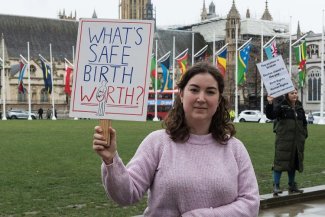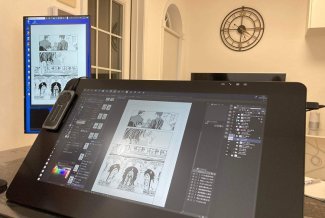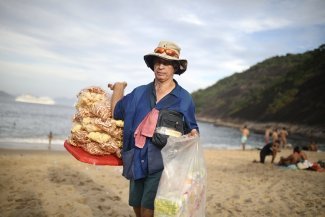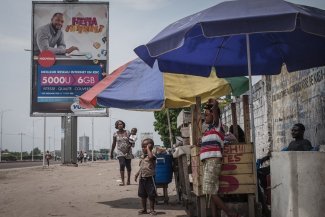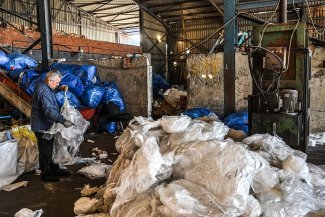The excess of information, the daily victim count, the devastating impact of that repeated image of deserted streets increases fear and anxiety, so much so that the authorities themselves have recommended reducing the information diet.
The shelves were laid bare, ransacked through desperation. In just a few hours, as if it were a perfectly coordinated military operation, toilet paper supplies ran out in an entire country. No one could believe it. Families of every social class had begun to empty the shops, moved by an irrational force. Abandoning all sense of decency, they charged through the aisles like hungry animals.
It happened on 20 December 1973 in the US. At the height of the oil crisis. The strange compulsion of humans to stock up on toilet roll dates a long way back.
In reality this phenomenon, known as “panic buying”, has been repeated in every major crisis throughout history. It involves a disproportionate hoarding of goods, be it toilet paper or any other item – during the Spanish flu the object of desire was Vicks VapoRub – motivated by fear, uncertainty, and the unbearable sense of losing control.
“In daily life, you have the feeling of being in control, that you can make decisions. When that perception is lost, one of the first strategies we have is to ‘do something’ to get it back, whatever it is. It doesn’t matter if it’s smart or not. One of the easiest things to do is hoard goods,” explains José Ramón Ubieto, professor of psychology at the Open University of Catalonia.
It is not, therefore, a logical response but a natural response. “Fear is a basic emotion that prepares us to adapt to life, to respond to possible threats,” says Guillermo Fouce, president of the NGO Psicologia sin Fronteras (Psychology Without Borders).
“What we have to consider is whether that fear is proportionate to the threat that is facing us, if it is maintained over time and consequently exhausts us, if it spreads to others,” he adds. Because it is at that moment when individual fear is turned into collective fear that the risk of overstepping the line of reasonableness – and thereby making decisions that are detrimental to oneself and others – is much greater.
Fouce, who has taken part in the psychological care measures put in place during emergencies such as the 11 March attacks in 2004 in Madrid, makes a distinction however between fear and panic. “Panic is an irrational response in which people either start running everywhere, or they freeze. It only occurs in two circumstances: when there is overcrowding or when there is fire and it usually causes many more deaths than the threat itself.”
The crisis triggered by the COVID-19 pandemic does not correspond, according to this expert, to panic, but to fear. A fear that shares many characteristics with other traumatic and unpredictable episodes from the past such as terrorist attacks, natural disasters and even other epidemics such as influenza A, although it also has its own distinguishing features.
Globalised fear
In February 2020, the Chinese government developed an online survey to test the mental health status of medical personnel and the general population during the COVID-19 pandemic. The results showed what was already suspected: 44.7 per cent of these people stated that they had experienced severe moments of stress and 50.7 per cent suffered from anxiety symptoms.
The purely physical fear of getting sick, the fear of losing your nearest and dearest, the fear of economic uncertainty, the unease caused by confinement can turn perfectly balanced people into emotional time bombs.
In the case of anxiety, it is an emotion linked to fear that is capable of causing a reaction even before the danger occurs, although there is no real risk. Hence the link to panic buying. “When individuals observe flight, defence or protective behaviour in others they tend to imitate it,” says Antonio Cano Vindel, president of the Spanish Society for the Study of Anxiety and Stress. “This is how stampedes happen. It is a response capacity similar to that of other species.”
The strange thing is that, despite the fact that this latest health crisis is increasing cases of anxiety, in reality we already lived in a society that was anxious in itself. Some 260 million people in the world habitually suffer this type of disorder, according to the World Health Organisation (WHO).
This is what the German sociologist Ulrich Beck was referring to when he stated that we live in a “risk society”. A paradoxical society that, despite promising us the highest levels of security ever seen, remains full of fears and uncertainties.
Furthermore, with globalisation, fears have also become global. The coronavirus case is the most obvious example of how this fear circulates rapidly from one country to another. A “liquid”, changing fear, said another (Polish) sociologist Zygmunt Bauman: “No walls capable of holding it have yet been invented. In the world of globalisation there is no place to run to. ”
The sense of continuous shock that permeates everyday life has been fuelled in the past four years by the emergence of another factor: the rise of populism. “Today we see [Donald] Trump, [Boris] Johnson, [Jair] Bolsonaro. We have seen how mistrust in leaders has grown exponentially ", warns Ubieto. “Now citizens distrust authorised institutions like the WHO, they distrust politicians, the media. This is a very important factor. If you add this distrust to a virus, the result is a tripling of the fear.”
The age of the ‘infodemic’
Fear has a propensity for contagion similar to that of any virus. This is not a catchphrase; there are studies that demonstrate this fact. The speed at which it filters can be even higher if you also have powerful accelerators.
If the 1991 Gulf War was the first-ever live ‘televised war’; and the fall of the Twin Towers in 2001 was the first ‘planetary tele-tragedy’, coronavirus pneumonia will go down in history for being the first pandemic relayed minute-by-minute by conventional means and social networks. Previous health crises like Ebola, SARS, or influenza A never reached that constant and instantaneous flow of information. Not until now has what WHO defines as an ‘infodemic’ been achieved.
The excess of information, the daily victim count, the devastating impact of that repeated image of deserted streets increases fear and anxiety, so much so that the authorities themselves have recommended reducing the information diet.
“Continuously processing information tends to lead to exhaustion. If this information is also emotional, it produces emotion and stress. The ability to think, to make decisions can be affected,” says Vindel.
This delirium of informational transparency can also be dangerous. In the age of the infodemic, information is often mixed with rumour, it is very difficult to distinguish one from another. This increases the climate of mistrust, makes us more vulnerable to lies.
“There have always been health hoaxes, but now the myths spread much faster. You have the population in a state of alarm, everyone hyper-connected and confined to their homes. The speed with which they spread is enormous. It’s unprecedented,” warns Mateos, coordinator of the project Salud sin bulos. (Health without Hoaxes).
The lies are camouflaged within well-crafted videos, through audios of alleged medical professionals, in documents with manipulated official logos, in humorous memes. “Above all they are transmitted by WhatsApp,” adds Mateos. “This is where we are also seeing a lot of conspiracy theories.”
‘Conspiranoia’ is another frequent factor in crisis situations. More than a quarter of Americans are convinced that the COVID-19 virus was intentionally developed in a laboratory. It is a way of making sense of chaos, of recovering the feeling of control , highly influenced by decades of cinema about catastrophes and pandemic dystopias.
It shouldn’t surprise us. The rise of science fiction already contributed in 1938 to the events that occurred after the broadcast of the War of the Worlds by Orson Welles. A clear example of how collective fear, with a strong enough accelerant, can dangerously trigger panic.
We are not gods
Almost the entire planet shares the same fears. This was highlighted in 2015 by a global survey conducted in 40 countries. Climate change, economic instability and terrorism by the self-styled Islamic State topped that global list of fears while health was nowhere to be seen. At that time no-one was worried about it. We believed ourselves invincible or as history professor Yuval Noah Harari said in his essay on the technological revolution and its promises of immortality: we believed ourselves gods.
“As humans we no longer had our feet on the ground. Now we have realised something that we had been denying all along: that we are fragile, limited, vulnerable beings,” says professor of philosphy Ana Carrasco Conde.
Now that an unknown virus has become an immediate threat – much more immediate than global warming – we are more aware of the body, but also of its limitations. The fear of death, the fear of loss has been rekindled. That is also something we had forgotten. “We do not know how to live with loss. Today, if we lose something, we think Amazon will come to the rescue,” says Ubieto.
Traumatic episodes from the past teach us important lessons. Above all that communities where boundless fear prevails end up being more fragile, or that fear is often used as a tool to control us and curb freedoms or create scapegoats. It happened with the Jews during the black plague.
“Aristotle said of fear that you had to find the middle ground between being reckless and being a coward,” says Carrasco. “He uses a word: prudence, which means knowing how to take the measure of things, to be moderate. For that we have to mitigate the noise, stop, think about what we know for certain, what is under our control, not project ourselves into the future. If human beings want to live properly, we must not be excessive, we must not go to extremes. The only ones that are excessive are the gods.”




